To help celebrate the return of the Rainbow Warrior to Australian shores in 2023, take a sail with us down memory lane to revisit some other historic times Greenpeace’s iconic flagship vessel has stopped by to say g’day.
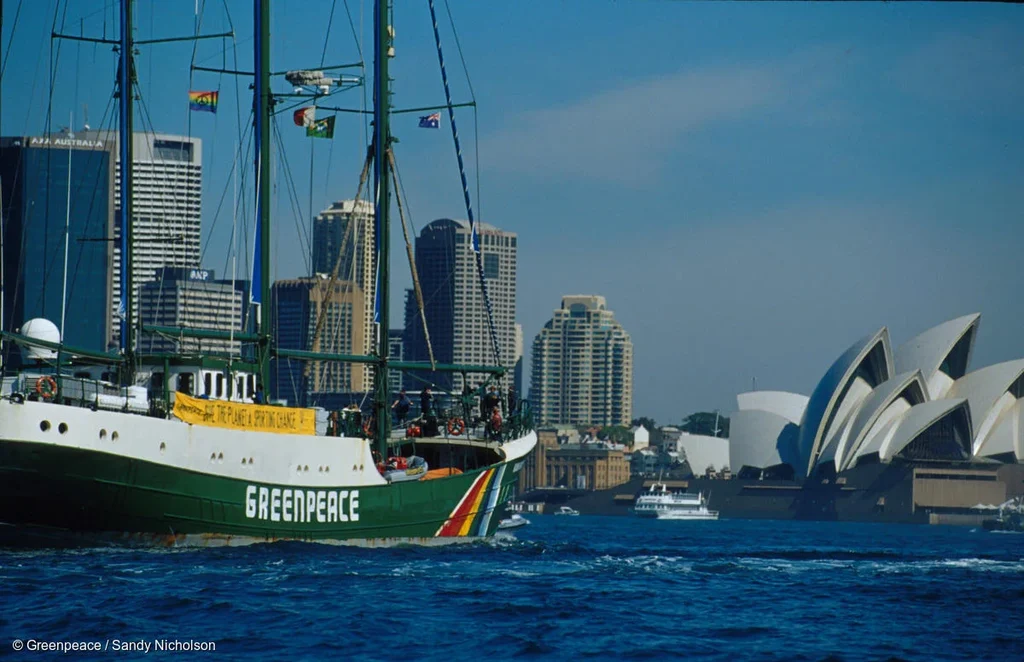
This month, we are excited to welcome back the Rainbow Warrior to Aussie shores, as it embarks on a journey up the West Australian coastline to join with local communities and protect our oceans and climate from fossil fuel company Woodside – and its monstrous Burrup Hub gas project.
Greenpeace has deep connections to Western Australia and its oceans.
In fact, this journey marks 45 years since Greenpeace Australia Pacific first began back in the 1970s. A time when whaling was the greatest threat to whales and activists put their bodies between the whales and whalers – helping to put an end to commercial whaling in this country.
And now in 2023, as the greatest threat to whales comes from fossil fuel companies driving dangerous climate change, our crew will be sailing the length of WA with a simple message: choose whales not Woodside.
Excited to dive into more history about the Rainbow Warrior? Of course you are.
Here’s a look back at some of the other times that Greenpeace’s flagship vessel has campaigned in Australian waters:
January 1990
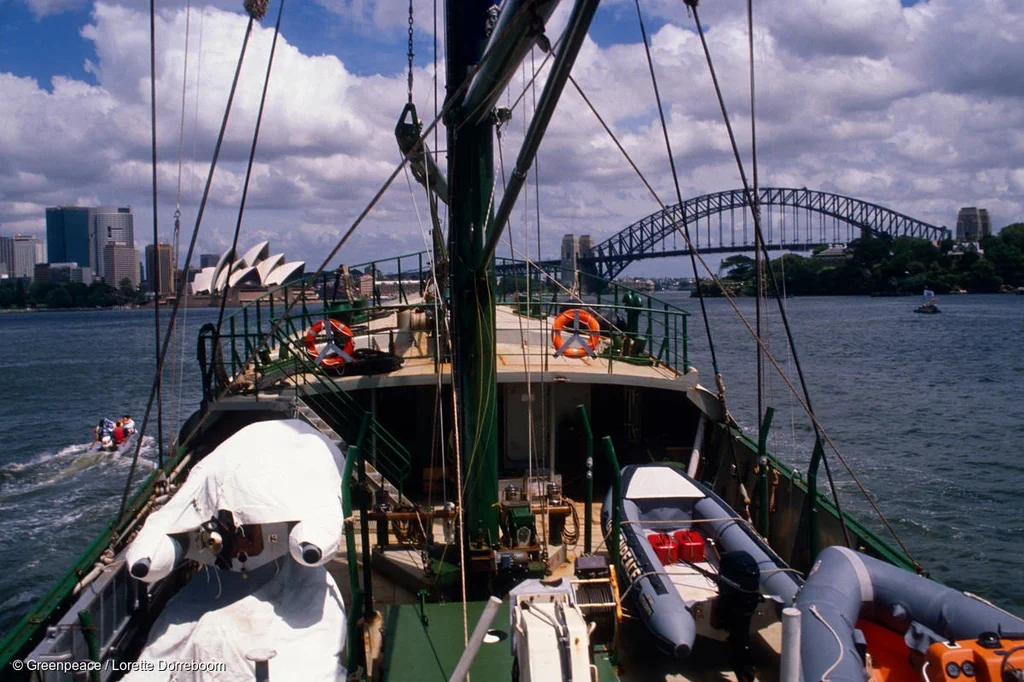
March 1991
The following year, in 1991, Greenpeace’s Rainbow Warrior returned to Australia to take a stand against fossil fuel giant BHP, who was conducting seismic testing in search of offshore oil at the time.
The ship carried a banner “Whales and Oil don’t mix”.
On this particular occasion, BHP’s ship, the Western Odyssey, was successfully prevented from continuing with its dangerous seismic testing activities thanks to the efforts of the crew.
March 1993
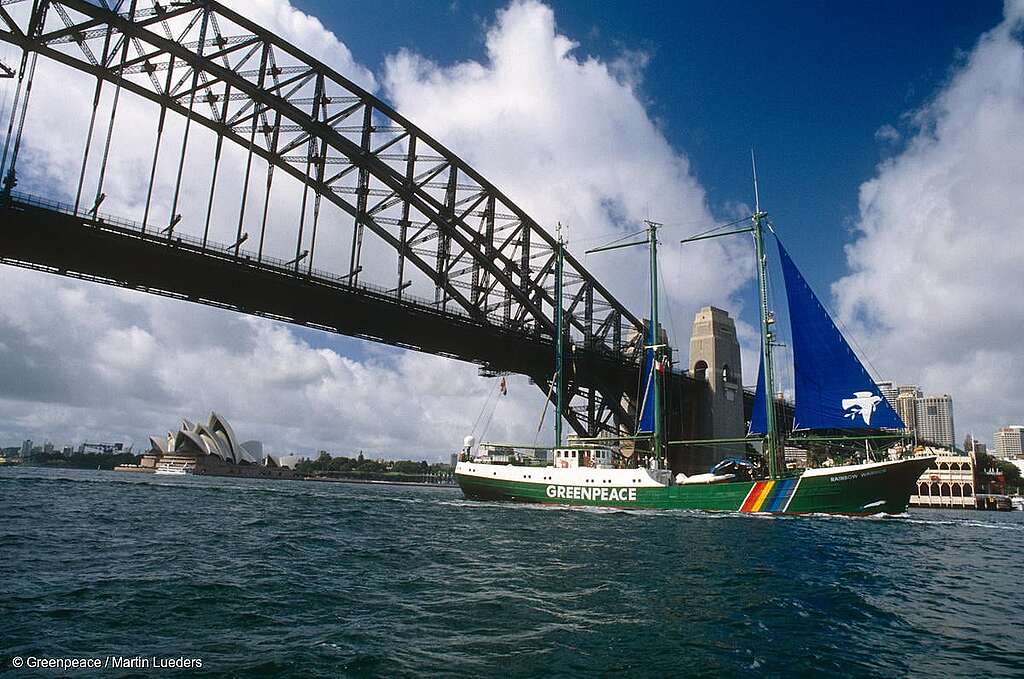
By 1993, Greenpeace’s famous rainbow ship returned once again for a four-month tour around the south and east coasts of Australia.
The tour saw several ports of call along the way, including blockading the entrance of a cargo ship, the Eastern Ruby, into Sydney Harbour which was carrying tropical timber from Malaysia.
Plus a stop into Hobart, where scientists onboard took oil samples and activists occupied a jarosite dumping ship for almost twelve hours.
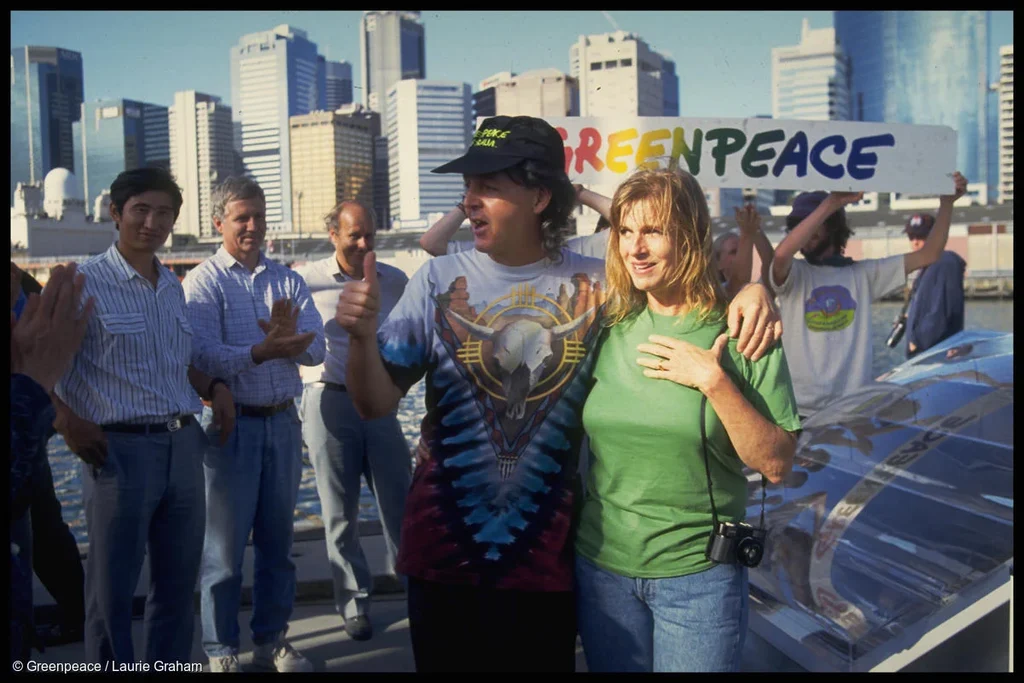
The trip even saw some special guest appearances onboard – including Paul and Linda McCartney.
September 2000
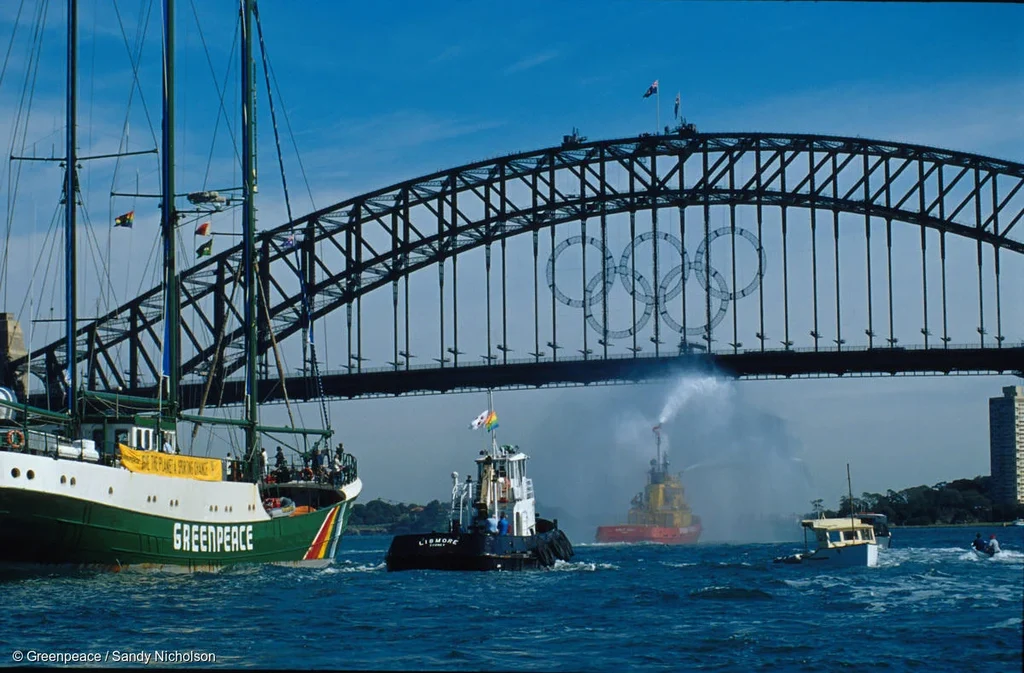
In 2000, the Rainbow Warrior returned to Sydney Harbour to help commemorate the Green Olympics, an idea inspired by Greenpeace to ensure commitments to green deeds during the Games – including energy and water conservation, and protection of the natural environment through initiatives including a solar-powered community for athletes to sleep and eat.
July 2000
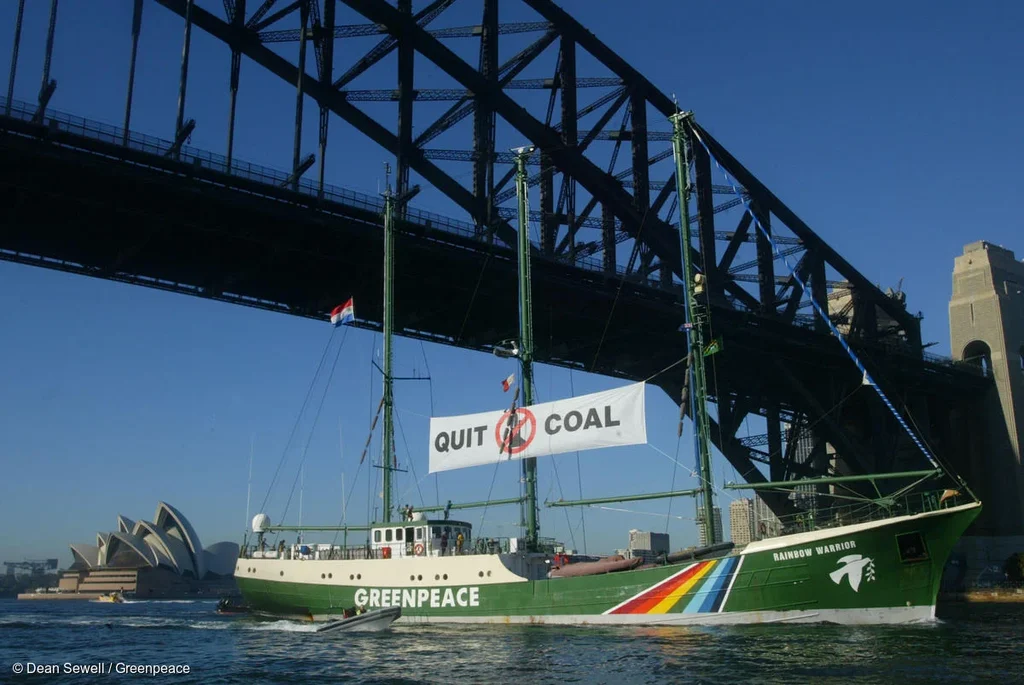
Australia welcomed the Rainbow Warrior back to Sydney Harbour in 2005, during its climate tour against coal, where the crew onboard peacefully disrupted the loading of coal in the world’s largest coal port and demanded a switch to renewable energy.
July 2015
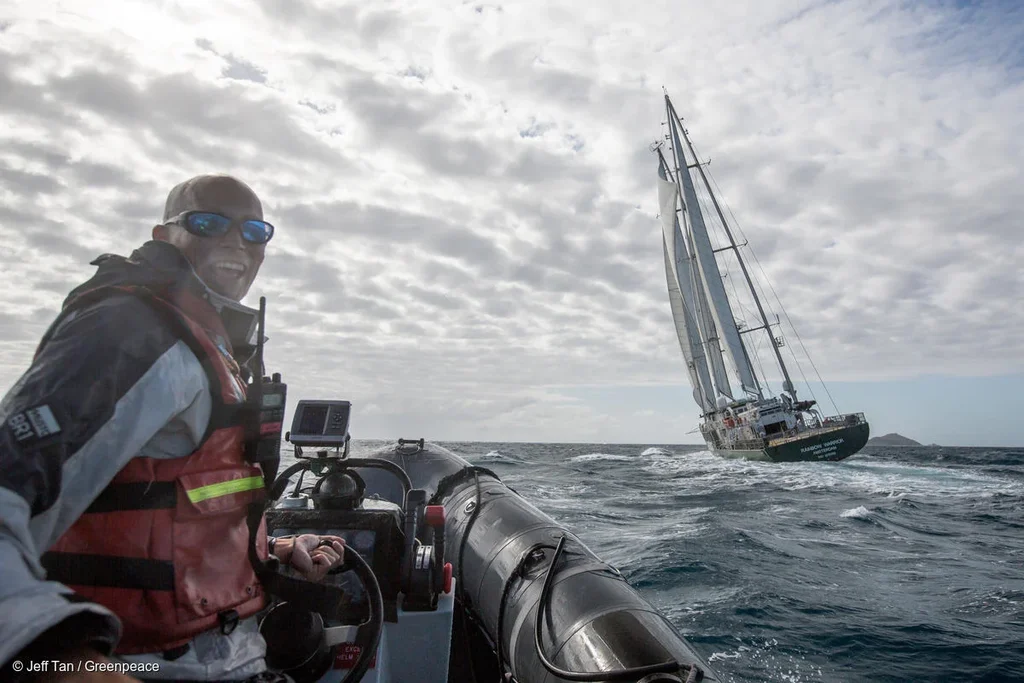
Ten years later, the Rainbow Warrior set sail towards one of the seventh wonders of the natural world during its six-week Save the Reef campaign.
The ship traveled up the east coast to raise awareness for the protection of the Great Barrier Reef, and was involved in several peaceful actions to protest against the transportation and usage of dirty fossil fuel, coal.
The tour also coincided with the 30th anniversary of the bombing of the Rainbow Warrior by the French government on the 10th of July 1985.
November 2018
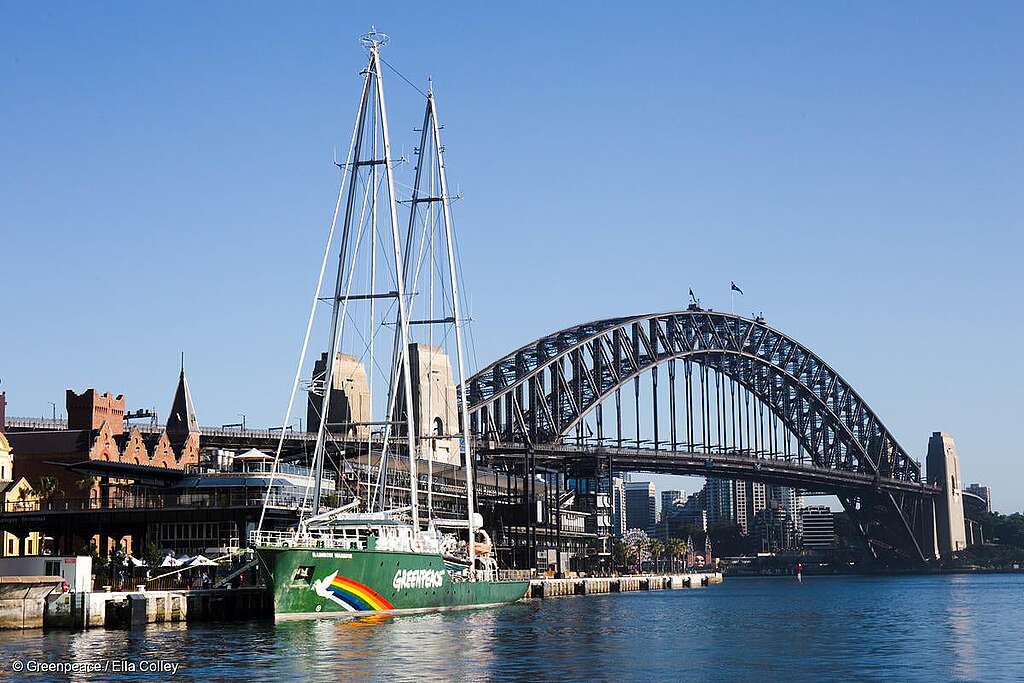
The last time the Rainbow Warrior visited Australian waters was back in 2018, during its Making Oil History tour, to draw attention to the threats posed by dangerous oil drilling in the Great Australian Bight.
The Warrior was stationed in Sydney for a day to meet with supporters, before departing on a voyage along the East Coast to Melbourne, South Australia, and Western Australia, where it helped launch a number of reports and conducted important scientific research to document the unsung beauty of the Bight.
By 2021, fossil fuel giants BP, Chevron, and Equinor, had all announced they will be abandoning their plans for offshore drilling in the Bight – a historic win for people and the planet.

